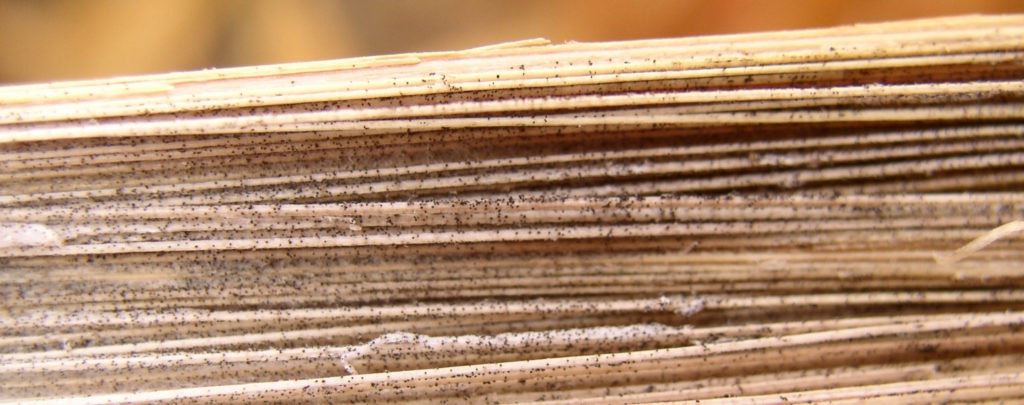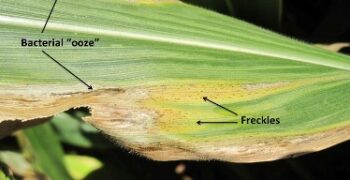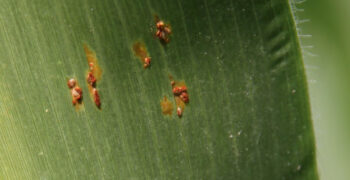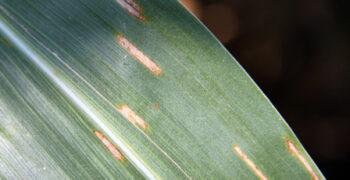Background:
Charcoal Rot forms from the fungus Macrophomina phaseolina. There are many host plants that are rotated with corn that the fungus can live in, including soybeans. The fungus causes the pith and rind of the stalk to turn a silvery grey caused by development of numerous black microsclerotia. These black microslerotia are very small that they resemble pepper and will start decomposing the pith and rind. The fungus resides in crop residue and within the soil and will infect plants through roots and lower stems. Charcoal rot can appear in normal year conditions but favor hot and dry weather.
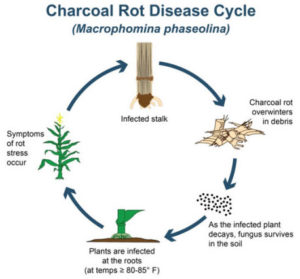 Scouting: R5-R6
Scouting: R5-R6
When looking for Charcoal Rot, we want to look in fields that have a history of Charcoal rot, or in the driest portions of that particular field such as sandy soils, or in compacted headlands. Split the stalk to see if there is any infection within the pith and rind of the plant. If infected, black pepper like specs called microsclerotia will be present on the pith.
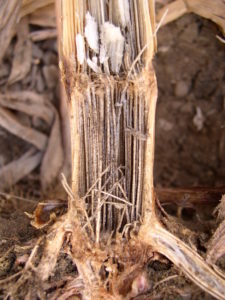 Management:
Management:
- Avoid dry conditions as much as possible, irrigate if available to you.
- Timely harvest, if charcoal rot is in your field, target it for an early harvest.
- Reduce stress within your field, making sure crop needs are met to give the plant the best chances against any pest or pathogen.
- Crop rotation will not be beneficial due to charcoal rot being able to infect corn, soybeans, sorghum and alfalfa.
- Some hybrids are resistant, hybrids with strong stalks, great disease packages will be the best defense against charcoal rot.
